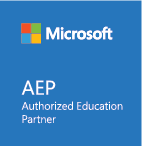Support for Microsoft Windows XP Ends April 2014
- Feb
- 14
8th April 2014 marks the date when Microsoft will be ending all support for their well endured, 13 year old operating system, Windows XP.
Many users, including Con Ed, believe it to have been one the most robust offered by Microsoft hence its longevity.
So what does this mean for the end user? Users will still be able to continue using the product; however security patches, Microsoft updates for both Windows and Microsoft Security Essentials and technical assistance will all stop. This will leave it potentially vulnerable to security risks, malware and viruses.
Security and tech experts have already suggested that cybercriminals may already be hoarding the flaws in Windows XP. They anticipate that once support finishes, the security flood gates will be raised and open season will begin, knowing full well that Microsoft will not be doing anything further about it.
Maybe other more pressing reasons to upgrade are application support. Windows XP will not run Internet Explorer 9 and above. Some web sites now require this and are inaccessible on Windows XP through Internet Explorer. We have also seen companies such as Capita withdrawing support for SIMS on Windows XP. It will probably still work, but if not, you are on your own.
It’s becoming difficult to buy computers that will run Windows XP. Manufacturers are simply not investing in developing the drivers to make it work. So you will probably be introducing Windows 7 computers anyway. Supporting both Windows XP and 7 will no doubt increase support costs.
Certainly, if not already, now is the time to plan for the retirement of Windows XP from the school. It’s also the ideal time to consider the Microsoft Open Value Subscription Agreement for Education Solutions (OVS-ES), which is especially cost effective during these school wide upgrade projects.
For each computer there are two options:
1) Upgrade the operating system
Very few older machines are capable of running newer operating systems such as Windows 7, or Windows 8.1 without performance being compromised, if not being incompatible. If the machine is not too old, adding memory may allow it to run Windows 7 and add an extra year or two to its service life.
2) Upgrade the machine
If the machine is not compatible with new operating systems due its age, it is probably time to start shopping for a new one. PCs and laptops are now more powerful, lightweight, quieter and stylish than they were 10 years ago – and let’s not forget CHEAPER!
That’s all well and good for the average home user, but for organisations like schools it can be a potentially costly affair. Con Ed prefer Windows 7 for operating system upgrades. (Microsoft are no longer selling retail versions of Windows 7, as they are trying to push the more recent Windows 8.1 product.) In most cases, our schools are able to upgrade to Windows 7 through buying individual “volume” licences or a Microsoft EES-OVS agreement. Ask us for more details.
Don’t worry, you are not the last to move to Windows 7. According to Net Applications, as of December 2013 nearly 30% of the world is running Microsoft XP, nearly 48% on Windows 7 and nearly 8% on Windows 8.1.
Home users can still buy new machines either with Windows 7 as standard, or purchase machines with Windows 8.1 with an option to downgrade to Windows 7. Users who wish to purchase Windows 8.1 instead can find out whether their current machine is compatible from here.






